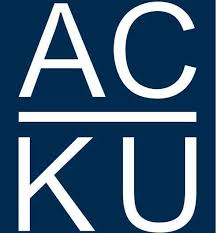The military operations at Cabul, which ended in the retreat and destruction of the British army, January 1842 : with a journal of imprisonment in Affghanistan / by Vincent Eyre.
Material type: TextLanguage: English Publication details: London : John Murray, 1843.Edition: Second editionDescription: xx, 328 pages : illustrations ; 30 cmSubject(s): LOC classification:
TextLanguage: English Publication details: London : John Murray, 1843.Edition: Second editionDescription: xx, 328 pages : illustrations ; 30 cmSubject(s): LOC classification: - DS363. E979 1843
| Item type | Current library | Call number | Status | Notes | Date due | Barcode | Item holds | |
|---|---|---|---|---|---|---|---|---|
 Monograph
Monograph
|
Afghanistan Centre at Kabul University | DS363.E979 1843 (Browse shelf(Opens below)) | Available | The digital file donated from Library of Congress-World Digital Library, PDF is available in ACKU. | 3ACKU000506500 |
“The Military Operations at Cabul is comprised primarily of the journal kept by Lieutenant Vincent Eyre (1811–81) before and during the time he was held prisoner in the First Anglo-Afghan War (1839–42). Appointed commissary of ordnance to the Kabul Field Force that marched into Afghanistan in the fall of 1839, Eyre arrived in Kabul in April 1840, bringing with him a large quantity of ordnance stores. Eyre begins his journal on November 2, 1841, the first day of the uprising by the Afghans against the Anglo-Indian force, in which Sir Alexander Burnes was killed. The occupiers were besieged in their cantonments and on November 13 Eyre was severely wounded. Under a treaty with the Afghan government, in early 1842 the Anglo-Indian force was given safe passage to evacuate the country. Accompanied by his wife and child, Eyre joined the column heading eastward but, along with the other British soldiers and civilians, he was taken hostage by the amir, Akbar Khan (1816–45, ruled 1842–45). The British hostages spent nearly nine months in captivity and suffered many privations, including severe cold and the effects of an earthquake and its aftershocks. In August 1842, the captives were marched north towards Bamian in the Hindu Kush under the threat of being sold as slaves to the Uzbeks. They finally were released on September 20, after one of the prisoners, Major Pottinger, succeeded in buying off the Afghan commander of their escort. Prior to his release, Eyre had managed to smuggle the manuscript of his journal in parts to a friend in India, who sent it to England where, with the help of Eyre’s relatives, it was published the following year. The book includes an introductory chapter, a foldout map of the Kabul cantonment and surrounding country made by Eyre, a glossary of Afghan terms, a list of those held prisoner and released in September 1842, and a list of the civilian and military officers killed in the uprising of November 1841. Eyre was a gifted artist who also produced most of the drawings in Prison Sketches, a collection of portraits of some of the men and women with whom he had been imprisoned that also was published in London in 1843”—copied from website.
The Library of Congress donated copies of the digitized material (along with extensive bibliographic records) containing more than 163,000 pages of documents to ACKU, the collections that include thousands of historical, cultural, and scholarly materials dating from the early 1300s to the 1990s includes books, manuscripts, maps, photographs, newspapers and periodicals related to Afghanistan in Pushto, Dari, as well as in English, French, German, Russian and other European languages ACKU has a PDF copy of the item.
Includes bibliographical references.
English
